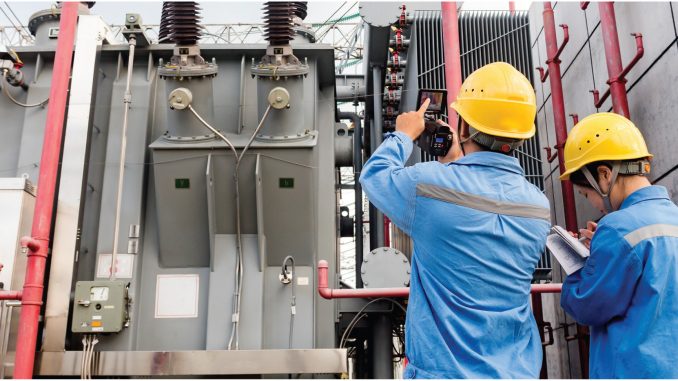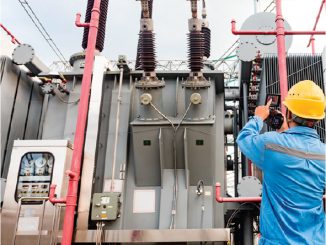
Transformers are one of the most important components in the electricity grid and are crucial to maintain stable and reliable power supply. A transformer is also the costliest equipment in a substation and is expected to serve the entire life of a substation, which is considered to be 35 years as per the Central Electricity Regulatory Commission (CERC). However, in India, many transformers fail much ahead of the completion of their useful life, sometimes even within five years. This has a huge financial impact on the utilities, besides disrupting power supply to consumers for an extended period.
At the high voltage transmission level (220 kV and above), 21 transformer failures were reported to the Central Electricity Authority (CEA) between September 2015 and December 2016, a significant increase from the six failures that were reported between October 2014 and August 2015. Failures can occur due to external factors such as short circuits in the grid or normal ageing. Apart from these, transformers may also fail due to the failure of any part like bushings, insulation system or on load tap changers (OLTC), and lack of good maintenance practices. These factors can be controlled to a great extent if the performance and condition of transformers are maintained at the desired levels, thereby curtailing reinvestment costs.
However, the operations and maintenance (O&M) of transformers along with other equipment has not been up to the mark owing to various reasons such as inadequate availability of modern diagnostic tools with most state utilities, shortage of supporting and experienced staff for O&M activities, and unavailability of shutdown, which defers the maintenance of equipment. Utilities have been taking a number of measures to overcome these issues. Meanwhile, O&M practices have also evolved over the years.
Power Line takes a look at the best practices with respect to the design and O&M of transformers…
CEA standards
The CEA has laid down specifications (Technical Standards for Construction of Electrical Plants and Electric Lines Regulations, 2010) for construction and operation of transformers that the utilities must comply with in order to achieve the desired equipment performance. As per the regulations, tertiary winding should be avoided, wherever possible, as it increases the probability of failure of transformers. However, wherever used, the rating of tertiary windings should be one third of the high voltage (HV) rating. In order to reduce the risk of spreading fire, transformers shall be provided with transformer oil soak pits to contain the total quantity of oil in the transformer. Generally, one spare single-phase transformer should be provided for a substation that can replace any of the units, if and when required. As a measure for fire detection and protection, the transformers should be provided with automatic high velocity water spray systems and water hydrant systems. In addition, high voltage transformers should also be provided with nitrogen injection-based fire protection systems.
In order to monitor the quality of oil for satisfactory performance of transformers and for periodical maintenance, necessary oil evacuating, filtering, testing and filling apparatus should be installed. Transformer banks (formed of single-phase units) and five-limbed, three-phase units should only be provided with tertiary winding rating, which is one-third of the HV rating. The tertiary terminals of a transformer that are prone to short circuiting by external elements such as birds or animals need to be suitably insulated. The short circuit withstand test has to be conducted on one power transformer of each type and rating to validate the design and quality.
The regulations have also suggested various diagnostic tools that should be used regularly for periodic/condition-based maintenance (CBM) of transformers. These include dissolved gas analysis of transformer oil, frequency response analysis, recovery voltage measurements and partial discharge measurement. Under the CBM, the asset condition is regularly tracked based on either on-site or remote monitoring.
O&M best practices
Besides the guidelines by the CEA, there are various O&M measures that have evolved based on the past experiences, which can enable the utilities in enhancing the performance and life of transformers. First and foremost, the proper handling, loading, unloading and storage of a transformer at a site before assembling play an important role in its satisfactory operation during its life. Moreover, transformers should always be installed by an experienced technical team under the close supervision of manufacturers. Whenever there is movement of a transformer either from manufacturing works to a site or from one station to another, sweep frequency response analysis (SFRA) should be carried out before the movement of the transformer as well as after its shift to the new location. SFRA provides information about any deformation in winding/core during transportation of a transformer.
In case there is a delay in commissioning of the transformer, proper care must be taken with respect to its storage. In addition to adhering to the manufacturer’s recommendations, it should not be kept for more than three months with inert gas (Nitrogen) filling. After three months, the transformer should be filled with oil under vacuum. It should also be provided with an oil conservator including an oil level indicator and a breather. During this entire period, the required pressure needs to be maintained in order to avoid exposure of the active part to the atmosphere.
Leakage of oil from transformers is a common phenomenon and hence the oil parameters need to be monitored regularly. Further, moisture in an oil-filled transformer can impact its life expectancy and operating efficiencies adversely. A dry transformer can withstand more load and has higher reliability, better performance and longer life. As per ABB Limited, the predictive lifetime of the paper insulation in a transformer at 80°C is 40 years at 1 per cent moisture level, and 10 years at 3 per cent moisture level. Hence, the oil level should always be under check. Meanwhile, manufacturers need to ensure that high quality material is used in the sealing system for oil and gas.
The regular cleaning of dust deposited on the bushings of a transformer is essential to avoid flash over across insulators. Frequent flash overs across bushings due to operations in a dusty environment also lead to transformer failures. As an alternative to regular cleaning, utilities may choose to protect them by providing a room temperature vulcanisation (RTV) coating. An RTV coating may also be considered by utilities for substation equipment installed in pollution-prone areas. OLTC is one of the contributors to the failure of a transformer. Possibility of eliminating OLTC from 400 kV & 765 kV class transformers should be considered (based on system studies). Reduction in the number of steps can also be considered in the case of OLTC of 220 kV and below voltage class transformers.
Utilities should maintain the history of performance of transformers and the results of all tests carried out before or after the occurrence of a failure (factory tests, pre-commissioning tests, tests during O&M, etc.). All this information should be available at the substation for the benefit of O&M staff. They should also make it a practice to carry out various tests on major electrical equipment one or two months prior to the expiry of the warranty period of respective equipment so that any abnormality observed in test results can be discussed with the equipment manufacturers and necessary action taken up within the warranty period. Further, composite health monitoring devices that can monitor a number of parameters like the insulation dissipation factor (tand), capacitance of winding and bushing, gas formation and moisture content, should be used.
Conclusion
Utilities need to follow best practices for the maintenance of transformers, ensuring their desired level of performance and preventing failures. All transformers that are approaching their end-of-service life need to be monitored more closely and action needs to be taken in advance for their replacement in a phased manner. While a lot of time is lost in the transportation of a failed transformer to the manufacturer’s works and back to its location and replacement of failed transformers, there is high cost involved in the online condition monitoring devices. Hence, manufacturers should take initiatives to promote and carry out on-site repair of transformers, which would save a significant amount of time and money.
It is also being observed that the technical specifications of transformers are not uniform across utilities. Going ahead, there is a need to standardise the specifications including the quality assurance plan, which shall help to ensure better service and quality from manufacturers. The utilities may also consider additional measures to improve the performance of transformers such as reduction in the maximum temperature of oil and winding, and maximum value of tand for windings and bushings, and the use of fibre optic sensors for hot spot monitoring of windings. Further, to help manufacturers take corrective action and improve the product design and quality, utilities should report the failure of transformers to manufacturers, even after the expiry of the warranty period.



